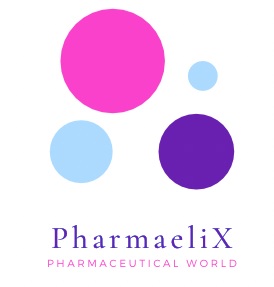Ultraviolet Visible Spectroscopy (UV-Vis) or Ultraviolet-Visible spectrophotometry (UV-Vis or UV/Vis) refers to absorption spectroscopy or reflectance spectroscopy in the ultraviolet-visible spectral region.
Principle of Ultraviolet Visible Spectroscopy
Spectrophotometry is a method to measure how much a chemical substance absorbs light by measuring the intensity of light as a beam of light passes through a sample solution.
Figure: Ultraviolet Visible Spectroscopy (UV-Visible Spectrometer), its absorbance spectra, and its principle of working.

The basic principle is that each compound absorbs or transmits light over a certain range of wavelengths.
- Routine organic UV spectra are typically collected from 200-700 nm
- The arithmetic relationship of these three quantities is expressed by c = λ. The laws of quantum mechanics may be applied to photons to show that
Where E is the energy of the radiation, is the frequency and h is Planck’s constant. Combining these two equations,
E = h c / λ
Beer-Lambert’s law of Ultraviolet Visible Spectroscopy (UV-VIS)
- Lambert’s law expresses the relationship between the light absorption capacity of the sample and the thickness of the absorbing medium.
- Beer’s law expresses the relationship between the light absorptive capacity of the sample and its concentration. The two laws are combined together to give Beer-Lambert’s law.
The above the principles are Heart of Ultraviolet Visible Spectroscopy.
Lambert’s Law
The proportion of incident light absorbed by a transparent medium is independent of the intensity of the light. Therefore successive layers of equal thickness will transmit an equal proportion of the incident energy.
Lambert’s law can express by,
I = T
Io
- Where I is the intensity of the transmitted light, Io is the intensity of the incident light, and T is the Transmittance. It is customary to express transmittance as a percentage:
%T = I x100
Beer’s Law
The absorption of light is directly proportional to both the concentration of the absorbing medium and the thickness of the medium in the light path.
A combination of the two laws (known jointly as the Beer-Lambert Law) defines the relationship between absorbance (A) and transmittance (T).
A = log Io = log 100 = ε c b
I T
- Where A is absorbance (no unit of measurement), ε is molar absorptivity (dm3 mol-1 cm-1), c is the molar concentration (mol dm-3), and b is path length (cm). It is important to note that ε is a function of wavelength and so the Beer-Lambert law is true only for the light of a single wavelength, or monochromatic light.
Absorption (A)
The Absorption of a solution can define as the logarithm to the base 10 of the reciprocal of transmittance (T) of monochromatic radiation.
Absorption spectrum
A graphic representation of absorbance plotted against wavelength or function of wavelength.
Transmittance
The quotient of the radiant power transmitted by a specimen is divided by the radiant power incident upon the specimen. For most of the systems, the absorptivity of a substance is a constant independent of the intensity of the incident radiation, the internal cell length, and the concentration, with the result that concentration may be determined photometrically.
Two sources may require to scan the entire UV-VIS band:
- Deuterium lamp – covers the UV – 200-330
- Tungsten lamp – covers 330-700
As with the dispersive IR, the lamps illuminate the entire band of UV or visible light; the monochromator (grating or prism) gradually changes the small bands of radiation sent to the beam splitter
The beam splitter sends a separate band to a cell containing the sample solution and a reference solution
The detector measures the difference between the transmitted light through the sample (I) vs. the incident light (I0) and sends this information to the recorder
Sample Handling of Ultraviolet Visible Spectroscopy
- Virtually all UV spectra are recorded solution-phase.
- Cells can be made of plastic, glass, or quartz.
- Only quartz is transparent in the full 200-700 nm range; plastic and glass are only suitable for visible spectra.
- Concentration (we will cover this shortly) is empirically determined.
- A typical sample cell (commonly called a cuvette).
Solvents must be transparent in the region to be observed; the wavelength where a solvent is no longer transparent is referred to as the cutoff.
Since spectra are only obtained up to 200 nm, solvents typically only need to lack conjugated systems or carbonyls.
What is UV Cuvette
Analyses will perform by using a conventional scanning spectrophotometer and the usual laboratory cuvette (special vial) that fits into the sample cavity of the instrument.

Figure: Quartz Cuvette
Cuvettes are manufactured from quartz, and plastic (disposable) depending upon UV transmission requirements.
Common Solvents with Cut off values in the UV region
| Common solvents | UV – cutoffs |
|---|---|
| Acetonitrile | 190 |
| Chloroform | 240 |
| cyclohexane | 195 |
| 1,4-dioxane | 215 |
| 95% ethanol | 205 |
| n-hexane | 201 |
| methanol | 205 |
| isooctane | 195 |
| water | 190 |
Types of UV-Visible Spectrophotometers
- Single beam spectrometer
- Double beam spectrometer
- Photodiode array spectrometer
Quality Assurance Check Points
- Calibration & Preventive Maintenance documents.
- Identifying what errors may occur during analysis and calibration.
Stay tuned here for never-before Pharma Articles – UV Visible Spectroscopy Method Guidance 2023

Trackbacks/Pingbacks